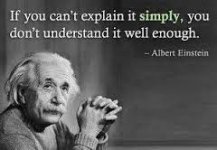About very familiar “ Electron”.
Nobody knows why electron has six ( 6 ) formulas :
a) Planck and Einstein found the energy of electron as: E=h*f
b) Sommerfeld found the formula of an electron as : e^2=ah*c
c) Dirac found two (2) more formulas of electron’s energy:
+E=Mc^2 and -E=Mc^2
d) According to QED in interaction with vacuum electron’s
energy is infinite: E= ∞
e) Electron tied with atom by the energy: E=-me^4/2h*^2= -13,6eV
Nobody knows what electron is.
====…
Physics is about behavior of matter.
Quantum physics is about behavior of quantum particles.
It is not Physics that gives behavior to matter; instead
it is behavior of matter that gives Physics theme of thinking.
Electron.
“We know electron by what it does, not by what it is.”
Electron has six (6) formulas it means that this electron can be in
six different states and electron can come from one state to another.
To come from one state to another one must be some mechanism
of changes. What is mechanism of its changes? Nobody gives answer.
Scientists and Philosophers must give answer.
=====…
“One thing I have learned in a long life:
that all our science, measured against reality, is primitive
and childlike - and yet it is the most precious thing we have.”
/Einstein./
=====…
Nobody knows why electron has six ( 6 ) formulas :
a) Planck and Einstein found the energy of electron as: E=h*f
b) Sommerfeld found the formula of an electron as : e^2=ah*c
c) Dirac found two (2) more formulas of electron’s energy:
+E=Mc^2 and -E=Mc^2
d) According to QED in interaction with vacuum electron’s
energy is infinite: E= ∞
e) Electron tied with atom by the energy: E=-me^4/2h*^2= -13,6eV
Nobody knows what electron is.
====…
Physics is about behavior of matter.
Quantum physics is about behavior of quantum particles.
It is not Physics that gives behavior to matter; instead
it is behavior of matter that gives Physics theme of thinking.
Electron.
“We know electron by what it does, not by what it is.”
Electron has six (6) formulas it means that this electron can be in
six different states and electron can come from one state to another.
To come from one state to another one must be some mechanism
of changes. What is mechanism of its changes? Nobody gives answer.
Scientists and Philosophers must give answer.
=====…
“One thing I have learned in a long life:
that all our science, measured against reality, is primitive
and childlike - and yet it is the most precious thing we have.”
/Einstein./
=====…

